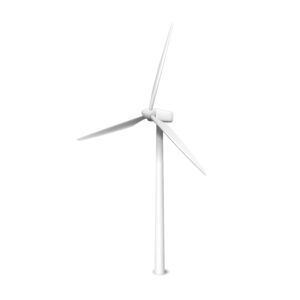Chemical nickel plating in the wind industry is a coating process involving the application of a layer of nickel to critical components used in wind turbines. This coating provides effective protection against corrosion, which is especially important given the environmental challenges and extreme weather conditions to which wind turbines are exposed. Nickel plating thus helps extend the life of components, keeping turbines operational and reliable over time. In addition to corrosion protection, nickel plating can also improve the electrical and thermal conductivity of components, thus contributing to the proper operation of wind turbines. Ultimately, nickel plating in the wind industry plays a crucial role in ensuring the reliability and durability of renewable energy infrastructure.

How is chemical nickel plating applied in the wind power industry?
In the wind industry, chemical nickel plating is mainly used to protect components exposed to weathering and the marine environment. These components include structural parts, such as wind towers, as well as supporting parts such as bolts, screws, and connectors. Nickel plating offers effective protection against corrosion, which can be particularly aggressive in marine environments or in areas with high humidity and exposure to weathering.
The nickel-plating process involves the immersion of components in a solution containing nickel salts, followed by the application of electric current to deposit a uniform layer of nickel on the surface of the metal. This nickel layer acts as a protective barrier, preventing rust and corrosion and thus prolonging the life of wind components.
In addition to corrosion protection, chemical nickel plating can also improve the electrical conductivity of components, reduce friction and wear on moving parts, and contribute to the aesthetic appearance of visible components. In addition, the corrosion resistance offered by nickel plating can reduce the frequency and cost of maintenance operations, improving the reliability and profitability of wind turbines over time.
In summary, chemical nickel plating plays an essential role in the wind industry by providing corrosion protection and improving the performance and durability of critical wind turbine components.
What are the advantages of chemical nickel plating in the wind power industry?
The advantages of chemical nickel plating in the wind power industry are many:
Corrosion protection:
Nickel plating provides effective protection against corrosion, which is particularly important in marine environments or those with high exposure to the elements. This helps prevent rust and corrosion of critical components of wind turbines, prolonging their operational life.
Improved durability:
Due to corrosion protection, nickel-plated components tend to have a longer service life than untreated components, reducing the need for frequent replacement and costly maintenance.
Reduced maintenance costs:
Because nickel-plated components are less prone to corrosion, less frequent maintenance is required, reducing maintenance costs and downtime of wind turbines.
Improved electrical performance:
Nickel plating can improve the electrical conductivity of components, ensuring more efficient transmission of electricity within the wind system.
Wear resistance:
The nickel layer can provide increased wear resistance on moving parts and areas subject to rubbing or friction, contributing to the durability and reliability of wind turbines.
Aesthetics and professional appearance:
The nickel-plated finish can give a professional, reflective appearance to wind turbine components, improving the overall aesthetic appearance of the structures and increasing their visual appeal.
In summary, chemical nickel plating in the wind industry offers a combination of corrosion protection, performance enhancement, maintenance cost reduction, and aesthetic improvement, thus contributing to longer life and reliability of wind turbines.
How much will chemical nickel plating be used in the wind power industry in the future?
In the future, it is likely that chemical nickel plating will continue to be widely used in the wind industry, given its proven effectiveness in protecting critical wind turbine components. As the wind industry grows and more and more turbines are installed in different environments, the need to protect components exposed to the weather and the marine environment will become even more crucial.
In addition, with an increasing focus on energy efficiency and reduced maintenance costs, it is expected that nickel plating will continue to be considered a reliable and cost-effective solution for extending the operational life of wind turbines. The evolution of nickel plating technologies could also lead to improvements in the corrosion resistance, efficiency and eco-sustainability of the process.
Finally, with increasing environmental awareness and the need to reduce the environmental impact of renewable energy, more eco-friendly nickel plating solutions are likely to be developed, using less toxic electrolytes and implementing more efficient waste treatment processes.
In summary, chemical nickel plating will continue to play an essential role in the wind industry in the future, providing corrosion protection, improving performance, and extending the life of wind turbines.

